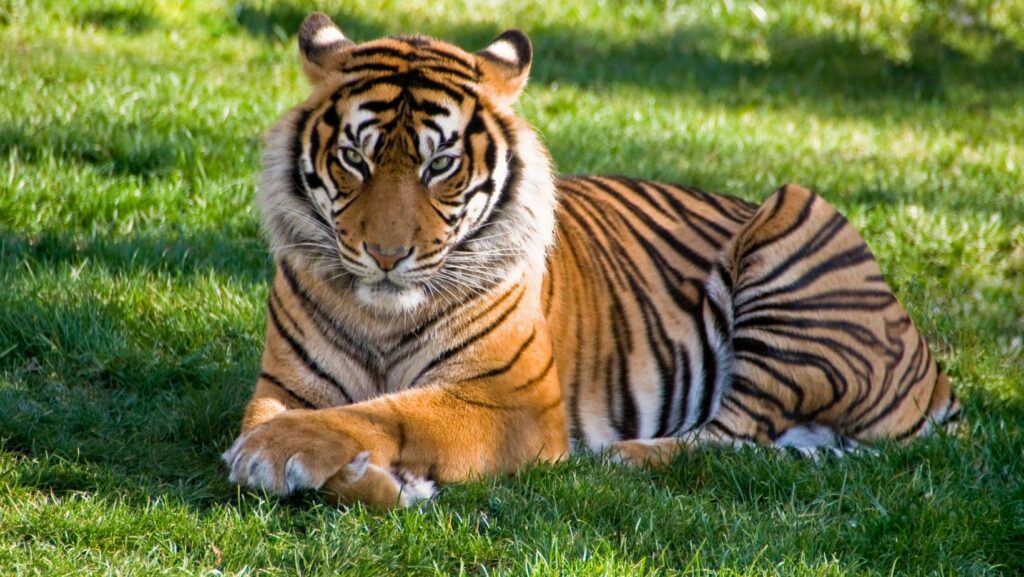Capturing the majestic essence of a tiger through drawing a cross design is an exhilarating challenge that artists of all levels can enjoy. The tiger, with its striking stripes and powerful presence, offers a compelling subject for both seasoned illustrators and enthusiastic beginners. Exploring the nuances of its anatomy and the play of light and shadow across its form can transform a simple sketch into a vivid masterpiece.
Understanding the intricacies of drawing a tiger involves more than just replicating its physical attributes in summer Olympics. It’s about conveying the spirit and energy of this magnificent creature on paper. Artists must consider factors like perspective, texture, and expression to bring their drawings to life. As they experiment with different techniques and styles, they not only refine their skills but also deepen their appreciation for the beauty of nature’s artistry. Whether for personal enjoyment or artistic growth, drawing a tiger is a rewarding endeavor that fosters creativity and precision.
Drawing:xms2zhd83gq= Tiger
 Drawing a tiger involves understanding its anatomy to capture its essence. Artists start by studying its muscular build, noting features like the broad forehead and powerful limbs. Observing how shadows highlight these areas helps create depth in drawings.
Drawing a tiger involves understanding its anatomy to capture its essence. Artists start by studying its muscular build, noting features like the broad forehead and powerful limbs. Observing how shadows highlight these areas helps create depth in drawings.
Texture plays a crucial role. Artists use techniques to depict the distinct patterns of a tiger’s fur, emphasizing contrasting stripes. Cross-hatching and stippling can illustrate the density and texture of the coat.
Expressions convey the tiger’s spirit. A focus on the eyes, often called the windows to the soul, captures the predator’s intensity. By adjusting the curvature of lines around the eyes and mouth, artists can depict emotions ranging from calm to fierce.
Different mediums allow for varied interpretations. Pencils give precision in detailing, while paints offer vibrancy in portraying the tiger’s striking colors. Experimentation with each medium enhances artistic skills.
Features and Specifications
Unique Attributes
 Tigers possess striking physical characteristics that make them popular subjects for artists. Their distinct stripes serve as natural camouflages, providing a challenge in replicating their pattern accurately. Notably, each tiger has a unique stripe pattern, akin to a fingerprint, which artists strive to capture authentically. The tiger’s powerful musculature and graceful movement require attention to detail to convey its strength and agility effectively. Their intense gaze, often used to express emotion, is a focal point for adding depth and life to the drawing.
Tigers possess striking physical characteristics that make them popular subjects for artists. Their distinct stripes serve as natural camouflages, providing a challenge in replicating their pattern accurately. Notably, each tiger has a unique stripe pattern, akin to a fingerprint, which artists strive to capture authentically. The tiger’s powerful musculature and graceful movement require attention to detail to convey its strength and agility effectively. Their intense gaze, often used to express emotion, is a focal point for adding depth and life to the drawing.
Materials and Tools Used
Artists choose from various materials to capture the tiger’s essence. Pencils, ranging from fine-point to charcoal varieties, allow for detailed line work and shading essential for texture. Paints, such as acrylics and watercolors, offer vibrant color options, critical for depicting the tiger’s rich fur tones and stripes. Digital tools, including graphic tablets and specialized software, provide flexibility in experimenting with color and form, enabling artists to refine their work efficiently.
Techniques and Style
Artistic Approach
 An effective artistic approach incorporates both realism and expression. For realism, mastering proportions and anatomy is crucial, as it ensures an accurate portrayal of the tiger’s powerful form. Techniques such as contour drawing help define the tiger’s form, while shading creates depth and dimension within the piece. By using the right techniques, artists capture the nuanced patterns and textures of a tiger’s fur, making the artwork more lifelike.
An effective artistic approach incorporates both realism and expression. For realism, mastering proportions and anatomy is crucial, as it ensures an accurate portrayal of the tiger’s powerful form. Techniques such as contour drawing help define the tiger’s form, while shading creates depth and dimension within the piece. By using the right techniques, artists capture the nuanced patterns and textures of a tiger’s fur, making the artwork more lifelike.
Experimentation with medium and texture adds complexity to the work. For example, charcoal allows for rich, deep tones, whereas colored pencils provide subtle gradations ideal for the intricate stripe patterns. Watercolors might be used for a softer, more interpretive rendition, emphasizing fluidity and grace.
Skill Level Required
 Drawing tigers caters to various skill levels, from beginners to seasoned artists. Beginners focus on basic anatomy and simple line work to grasp the tiger’s form. Studying reference images aids in understanding its unique attributes and builds foundational skills.
Drawing tigers caters to various skill levels, from beginners to seasoned artists. Beginners focus on basic anatomy and simple line work to grasp the tiger’s form. Studying reference images aids in understanding its unique attributes and builds foundational skills.
Intermediate artists delve into more complex techniques, such as advanced shading and color blending, to add depth and realism. They’re encouraged to experiment with different motifs, capturing the essence of the tiger beyond its physical appearance.

